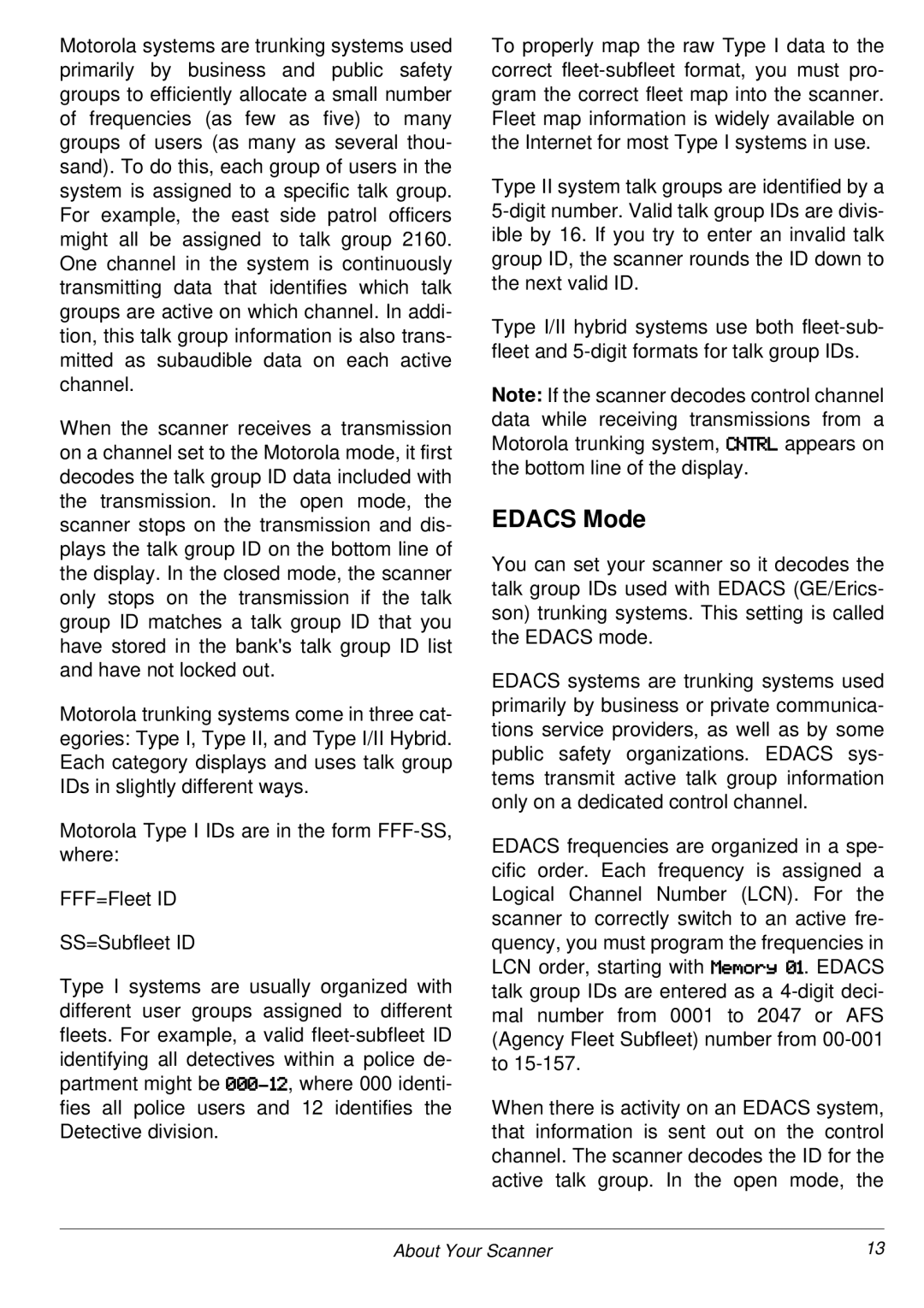Motorola systems are trunking systems used primarily by business and public safety groups to efficiently allocate a small number of frequencies (as few as five) to many groups of users (as many as several thou- sand). To do this, each group of users in the system is assigned to a specific talk group. For example, the east side patrol officers might all be assigned to talk group 2160. One channel in the system is continuously transmitting data that identifies which talk groups are active on which channel. In addi- tion, this talk group information is also trans- mitted as subaudible data on each active channel.
When the scanner receives a transmission on a channel set to the Motorola mode, it first decodes the talk group ID data included with the transmission. In the open mode, the scanner stops on the transmission and dis- plays the talk group ID on the bottom line of the display. In the closed mode, the scanner only stops on the transmission if the talk group ID matches a talk group ID that you have stored in the bank's talk group ID list and have not locked out.
Motorola trunking systems come in three cat- egories: Type I, Type II, and Type I/II Hybrid. Each category displays and uses talk group IDs in slightly different ways.
Motorola Type I IDs are in the form
FFF=Fleet ID
SS=Subfleet ID
Type I systems are usually organized with different user groups assigned to different fleets. For example, a valid
To properly map the raw Type I data to the correct
Type II system talk groups are identified by a
Type I/II hybrid systems use both
Note: If the scanner decodes control channel data while receiving transmissions from a Motorola trunking system, á*0.( appears on the bottom line of the display.
EDACS Mode
You can set your scanner so it decodes the talk group IDs used with EDACS (GE/Erics- son) trunking systems. This setting is called the EDACS mode.
EDACS systems are trunking systems used primarily by business or private communica- tions service providers, as well as by some public safety organizations. EDACS sys- tems transmit active talk group information only on a dedicated control channel.
EDACS frequencies are organized in a spe- cific order. Each frequency is assigned a Logical Channel Number (LCN). For the scanner to correctly switch to an active fre- quency, you must program the frequencies in LCN order, starting with )<DFIPýòñ. EDACS talk group IDs are entered as a
When there is activity on an EDACS system, that information is sent out on the control channel. The scanner decodes the ID for the active talk group. In the open mode, the
About Your Scanner | 13 |
